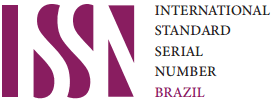Prevalence and risk factors for internet gaming disorder
PDF em inglês: http://doi.org/10.1590/1516-4446-2019-0760
DOI:
https://doi.org/10.25118/2763-9037.2022.v12.462Keywords:
addictive behavior, video game, internet, assessmentAbstract
Objectives: To estimate the prevalence of internet gaming disorder (IGD) and associated risk factors in a sample of secondary and postsecondary students from a public federal institution of higher education (Instituto Federal de Educação, Ciência e Tecnologia) in Southern Brazil. Methods: The study included a sociodemographic questionnaire, the Beck Depression Inventory (BDI), Self-Report Questionnaire (SRQ-20), Pittsburgh Sleep Quality Index (PSQI-BR), the Mini-Social Phobia Inventory (Mini-SPIN), and the Game Addiction Scale (GAS). Finally, IGD was measured with the Brazilian version of the Internet Gaming Disorder Scale-Short-Form (IGDS9-SF), which has been psychometrically validated in this population. Results: Overall, 38.2% (n=212) of the sample exhibited IGD symptoms, with 18.2% (n=101) being classed as at-risk gamers. Regression analysis found IGD to be associated with male gender, severe depressive symptoms, poor sleep quality, increased time spent gaming, and total free time spent gaming (p < 0.001). Conclusions: The prevalence of IGD in this sample was relatively high, and associated risk factors found were similar to those previously reported in the literature. Further studies investigating the epidemiology of IGD in Brazilian samples are warranted to better understand treatment needs and inform preventive measures in this population.
Downloads
Metrics
References
Pontes HM, Griffiths MD. Measuring DSM-5 Internet gaming disorder: development and validation of a short psychometric scale. Comput Human Behav. 2015;45:137-43. https://doi.org/10.1016/j.chb.2014.12.006
Pontes HM, Schivinski B, Sindermann C, Li M, Becker B, Zhou M, Montag C. Measurement and conceptualization of gaming disorder according to the world health organization framework: the development of the gaming disorder test. Int J Ment Health Addict. 2021;19:08-528. [Published 3 June 2019]. https://doi.org/10.1007/s11469-019-00088-z
Fam JY. Prevalence of internet gaming disorder in adolescents: a meta‐analysis across three decades. Scand J Psychol. 2018;59:524-31. https://doi.org/10.1111/sjop.12459 - PMid:30004118
Hawi NS, Samaha M, Griffiths MD. Internet gaming disorder in Lebanon: relationships with age, sleep habits, and academic achievement. J Behav Addict. 2018;7:70-8. https://doi.org/10.1556/2006.7.2018.16 - PMid:29486571 PMCid:PMC6035028
Torres-Rodríguez A, Griffiths MD, Carbonell X, Oberst U. Internet gaming disorder in adolescence: psychological characteristics of a clinical sample. J Behav Addict. 2018;7:707-18. https://doi.org/10.1556/2006.7.2018.75 - PMid:30264606 PMCid:PMC6426364
Lemos IL, Conti MA, Sougey EB. Avaliação da equivalência semântica e consistência interna da Game Addiction Scale (GAS): versão em português. Braz J Psychiatry. 2015;64:8-16. https://doi.org/10.1590/0047-2085000000051
Suzuki FTI, Matias MV, Silva MTA, Oliveira MP. O uso de videogames, jogos de computador e internet por uma amostra de universitários da Universidade de São Paulo. Braz J Psychiatry. 2009;58:162-8. https://doi.org/10.1590/S0047-20852009000300004
Price waterhouse Coopers Brasil (PwC). Somos gamers. [cited 2019 Nov 5]. http://www.pwc.com.br/pt/outlook-17/somos-gamers.html
Severo RB, Barbosa AP, Fouchy DR, Cunha Coelho FM, Pinheiro RT, Figueiredo VL, Afonso VS, Pontes HM, Pinheiro KAT. Development and psychometric validation of internet gaming disorder scale-short-form (IGDS9-SF) in a Brazilian sample. Addict Behav. 2020;103:106191. https://doi.org/10.1016/j.addbeh.2019.106191 - PMid:31887719
Cunha JA. Manual da versão em português das Escalas Beck. São Paulo: Casa do Psicólogo; 2001.
D'El Rey GJ, Lacava JP, Cardoso R. Consistência interna da versão em português do Mini-Inventário de Fobia Social (Mini-SPIN). Rev Psiquiatr Clin. 2007;34:266-269. https://doi.org/10.1590/S0101-60832007000600002
Gonçalves DM, Stein AT, Kapczinski F. Performance of the self-reporting questionnaire as a psychiatric screening questionnaire: a comparative study with structured clinical interview for DSM-IV-TR. Cad Saude Publica. 2008;24:380-90. https://doi.org/10.1590/S0102-311X2008000200017 - PMid:18278285
Bertolazi AN, Fagondes SC, Hoff LS, Dartora EG, da Silva Miozzo IC, de Barba ME, Barreto, SSM. Validation of the Brazilian Portuguese version of the Pittsburgh sleep quality index. Sleep Med. 2011;12:70-5. https://doi.org/10.1016/j.sleep.2010.04.020 PMid:21145786
Kuss DJ, Pontes HM. Internet addiction. Göttingen: Hogrefe; 2019. https://doi.org/10.1027/00501-000
Stavropoulos V, Burleigh TL, Beard CL, Gomez R, Griffiths MD. Being there: a preliminary study examining the role of presence in internet gaming disorder. Int J Ment Health Addict. 2019;17(4):880-890. https://doi.org/10.1007/s11469-018-9891-y

Downloads
Published
How to Cite
Issue
Section
License
Copyright (c) 2023 Rovena Batista Severo, Jennifer M. Soares, Josiara P. Affonso, Daniela A. Giusti, Adão A. de Souza Junior, Vera L. de Figueiredo, Karen A. Pinheiro, Halley M. Pontes

This work is licensed under a Creative Commons Attribution-NonCommercial 4.0 International License.
Debates em Psiquiatria allows the author (s) to keep their copyrights unrestricted. Allows the author (s) to retain their publication rights without restriction. Authors should ensure that the article is an original work without fabrication, fraud or plagiarism; does not infringe any copyright or right of ownership of any third party. Authors should also ensure that each one complies with the authorship requirements as recommended by the ICMJE and understand that if the article or part of it is flawed or fraudulent, each author shares responsibility.
Attribution-NonCommercial 4.0 International (CC BY-NC 4.0) - Debates em Psiquiatria is governed by the licencse CC-By-NC
You are free to:
- Share — copy and redistribute the material in any medium or format
- Adapt — remix, transform, and build upon the material
The licensor cannot revoke these freedoms as long as you follow the license terms. Under the following terms:
- Attribution — You must give appropriate credit, provide a link to the license, and indicate if changes were made. You may do so in any reasonable manner, but not in any way that suggests the licensor endorses you or your use.
- NonCommercial — You may not use the material for commercial purposes.
No additional restrictions — You may not apply legal terms or technological measures that legally restrict others from doing anything the license permits.





























